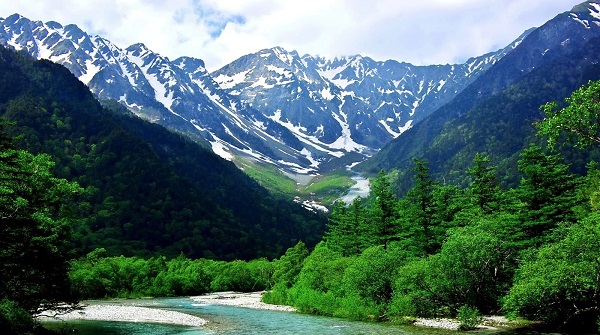Valley

A valley is a thin basin situated between the bases of mountains. Valleys are formed by erosion caused by the ice and the course of water. The shape of valley depends upon how it began.
Glacier Valley
A glacier is a persistent body of dense ice that is constantly moving under its own weight; it forms where the accumulation of snow exceeds its melting and sublimation over many years, often centuries.
A glacier valley is formed by the slow advance of a glacier and is formed like a letter U – steep sides and a flat base.

Glaciers form only on land and are distinct from the much thinner sea ice and lake ice.
River Valley
Rivers usually begin in hills and in mountains. The water river comes from the melting of ice which flows down to a lower level, like rain.
A river valley is excavated by the course of a river or waterfall. Its shape is like a letter V – sloping sides and a narrow base.


